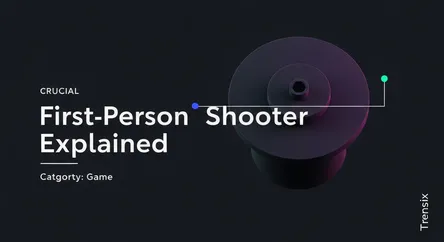Game
First-Person Shooter Explained

Explore the First-Person Shooter (FPS) genre. Learn what these immersive games are, why they're so popular, and how they impact players worldwide.
What is it?
A First-Person Shooter (FPS) is a video game genre centered on weapon-based combat from a first-person perspective. Players experience the game world through the eyes of their character, creating a highly immersive point of view. The core mechanic involves aiming and shooting at targets, whether they are AI-controlled enemies or other players in a multiplayer setting. Gameplay often revolves around fast-paced action, tactical positioning, and achieving objectives that range from simple elimination to complex, team-based goals. Popular examples include franchises like Call of Duty, Counter-Strike, and Halo.
Why is it trending?
The FPS genre maintains its popularity due to its high level of immersion and competitive nature. The first-person view puts players directly into the action, making for a thrilling experience. The rise of online multiplayer and professional esports leagues has solidified its place in gaming culture, turning games like Valorant and Apex Legends into global phenomena. Constant innovation in graphics, game physics, and live-service content models keeps players engaged for years, with regular updates, new maps, and cosmetic items fueling a dedicated player base.
How does it affect people?
Playing FPS games can positively impact cognitive skills, such as improving hand-eye coordination, spatial awareness, and reaction time. The strategic depth required in team-based modes also fosters communication, collaboration, and quick decision-making under pressure. For many, FPS games are a primary social outlet, allowing them to connect and compete with friends online. However, the genre's competitive and sometimes intense nature can also lead to frustration or addictive behavior in some individuals. The debate around the link between virtual violence and real-world aggression continues, though many studies find no direct causal link.